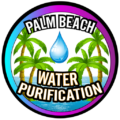Municipal water companies are dealing with increasing amounts of algae in their systems.
https://www.columbus.gov/AlgaeFAQs/
“The bottom line is that we can’t say whether they are increasing or not, we know that the conditions that lead to algal blooms — nutrient pollution and warm water — are present in these freshwater lakes, says Jonathan Yoder, a CDC epidemiologist
The city of Toledo and nearby communities have earned the dubious distinction of being the first to report outbreaks of human illness due to algae toxins in municipal drinking water, according to a report published Thursday by the Centers for Disease Control and Prevention.
Both areas take their drinking water from Lake Erie. Blue-green algae are common there and in many other in freshwater lakes, where they can multiply in the heat of summer and produce toxins, according to the Environmental Protection Agency.
Exposure to water contaminated by toxins can cause rashes, respiratory issues, and stomach or liver illness, and are an ongoing issue in recreational areas around the country.
The adverse effects of algae include taste and odor, filter clogging, oxygen depletion, toxin production, the formation of disinfection byproducts, undesirable pH changes, and scum formation in lakes and reservoirs. The production of objectionable taste-and-odor substances is one of the most common deleterious effects of algae in water supplies, resulting in higher treatment costs and affecting the acceptability of the water to the consumers. This problem can also lead to the erosion of public confidence in the water supply. The usual odors or off-flavors are earth-musty, moldy, fishy, grassy or
“septic.” The most difficult odors to deal with are those involving the earthy-musty compounds geosmin or 2-methylisoborneol (MIB), which
can be detected by many people at extremely low concentrations (<15 ng/L). They are very difficult to remove by conventional
treatment, although they can be removed by ozone or granular activated carbon. These compounds are produced by bacteria called
actinomycetes, and by some cyanobacteria.
https://www.awwa.org/portals/0/files/publications/documents/samples/identificationofalgae-sample.pdf
Not everything about algae is bad. Here are some interesting facts about algae:
https://www.npr.org/sections/health-shots/2017/11/09/563073022/algae-contaminates-drinking-water
Facts about algae
- If you think algae are just plants living in water, think again. The mostly aquatic organisms produce oxygen through photosynthesis, though they lack many of the other defining traits of plants, including roots and leaves.
- Algae can range from 100-foot-long giant kelp to several varieties of microbes called cyanobacteria, also known as blue-green algae.
- Usually associated with dangerous algal blooms that can sicken humans and animals, these tough little microbes can also live in hot springs, under rocks in arid deserts and even under Antarctic ice.
- Cyanobacteria might also be in your breakfast smoothie. The “superfood” spirulina is a nontoxic cyanobacteria popular for its nutritional profile, including proteins, vitamins, minerals and essential fatty acids.
- In Chad, the Kanembu people have been harvesting spirulina from local lakes since at least the 1940s, way ahead of the superfood trend. Even earlier, the Aztecs ate a different species of the cyanobacteria, collected from the ancient Lake Texcoco — drained during colonial times — where Mexico City now stands.
- Plenty of larger algae are both nutritious and delicious. In Japan, for instance, you might find a dozen or more varieties of seaweed on the menu, from soups to sushi wrappers.
- Algae has probably found its way into your dessert, too. The gelatinous additives agar and carrageenan, produced from different species of red algae, thicken and prevent separation in ice cream, jellies, squishy sweets and many other processed foods.
- Researchers are even adding algae to dairy cow diets. Results from a 2017 study suggest that supplementing feed with seaweed might cut down on the methane cows burp out: The algae produces a chemical that inhibits gut microbes from making as much of the greenhouse gas.
- Sometimes, in fact, algae are a little too good at reducing greenhouse gases. About 445 million years ago, larger and more complex algae became more common and gobbled up carbon dioxide so quickly that they disrupted the planet’s carbon cycle, according to a 2018 Nature Geoscience study. This might have caused the global cooling and glaciation responsible for the earliest known mass extinction.
- Today, algae actually help maintain the carbon cycle. Scientists estimate that algae produce at least half of the oxygen in Earth’s atmosphere by converting carbon dioxide during photosynthesis.
- You can thank algae for our seafood, too. Tiny phytoplankton, found worldwide, make up the base of aquatic food chains.
- However, some plankton produces toxins that build up in animals higher up these food chains. Humans who consume tainted seafood could experience a range of nasty symptoms, from vomiting and diarrhea to seizures and memory loss.
- Microalgae can be processed into a liquid or dried into granules and powders after being cultured in petri dishes, providing humans with everything from key vitamins to a potential future fuel source. (Victor de Schwanberg/Science Source)
- Human-caused climate change may be making toxic plankton blooms more common and more severe as the oceans warm, conditions that favor their rapid growth.
- Toxic algal blooms have hit seafood industries on the Pacific Coast hard in the past few years. In November, a fishing trade association sued 30 fossil fuel companies, blaming them for economic losses.
- Climate change might also affect algal blooms by changing storm patterns and intensifying rainfall in some parts of the world. Torrents can wash nutrients from land fertilizers into bodies of water, encouraging algae to multiply.
- Fertilizer runoff after Hurricane Irma in September 2017 might partly explain a long-lived, catastrophic red tide that subsequently struck Florida’s west coast, killing fish, sea turtles and manatees.
- Long-dead ancient algae have a more fundamental connection to modern climate change. A lot of the fossil fuels in use today, the main culprits of global warming, are derived from deposits of these organisms dating back millions of years.
- In the early years of the 21st century, eco-minded researchers and entrepreneurs staked claims in a kind of gold rush — or maybe green rush — to replace fossil fuels by using living algae in sustainable biofuel production.
- The green rush has yet to pan out. In 2017, scientists figured that algae probably weren’t productive enough. The organisms might not even produce enough fuel to make up for the energy needed to grow them.
- But here’s a productive relationship for you: Some plankton have mutually beneficial partnerships with coral. The microalgae live inside coral cells, converting sunlight into energy that the corals can use to build reefs; in return, the plankton get free room and board.

